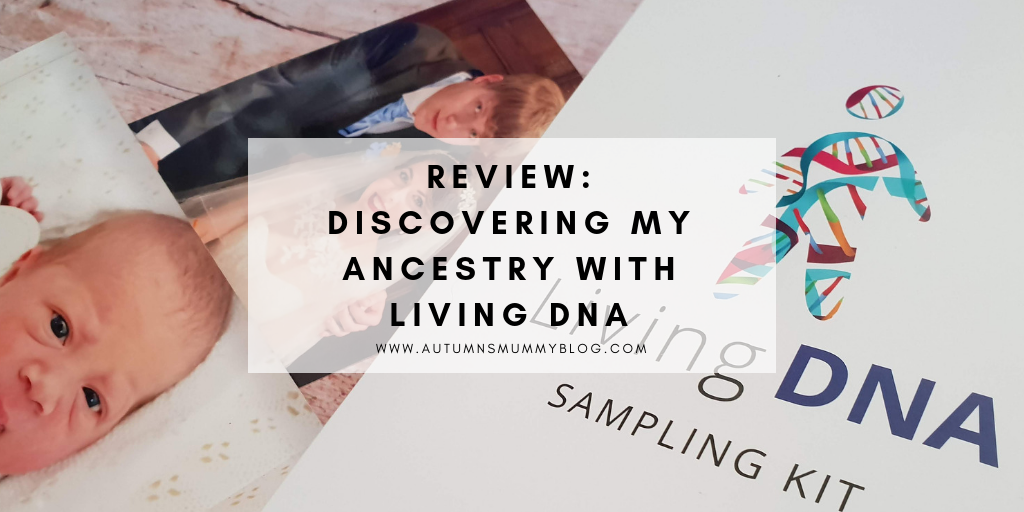Have you ever wondered where you come from? I have always had an intrinsic interest in my family history. I’ve spent hours, days even, scouring genealogy sites. I’ve put together a huge family tree and learnt a lot about my ancestry. Whilst in parts I’ve got back as far as the 13th century, I still have a thirst for knowledge. I particularly want to know more about my mum’s side of the family, as common surnames have made tracing back very difficult. DNA ancestry tests have really intrigued me since I first found out about them. There are quite a few DNA ancestry test websites around now and they’re fairly afforable. Everything I’ve found out so far shows my ancestors in England, Wales, Ireland and Germany. As such, I’ve been curious to find out whether my ancestors have always remained in this part of the globe, as they have been for the last few hundred years. Thanks to Living DNA, I now have some answers!
About Living DNA
Living DNA is a collaboration of “over 100 world-leading scientists, academic researchers, and genetic experts” from all over the world. I love how the owners wanted “to show humanity that we are all made up of all of us, dissolving the concept of race”.
Living DNA offers more than other tests of its kind, as you’ll see as we look at my results. Although it’s a little pricey initially, that covers a lifetime. As science and technology progresses and more research is done, more information would become available to you.
As someone interested in genealogy, a feature called Family Networks is coming soon which I’m particularly excited about! Check it out in this video:
Taking the DNA test
When the kit arrives, there are simple instructions and everything is marked. You simple use a swab on the inside of your cheek, pop it into the specimen bag and send it off with the envelope included.
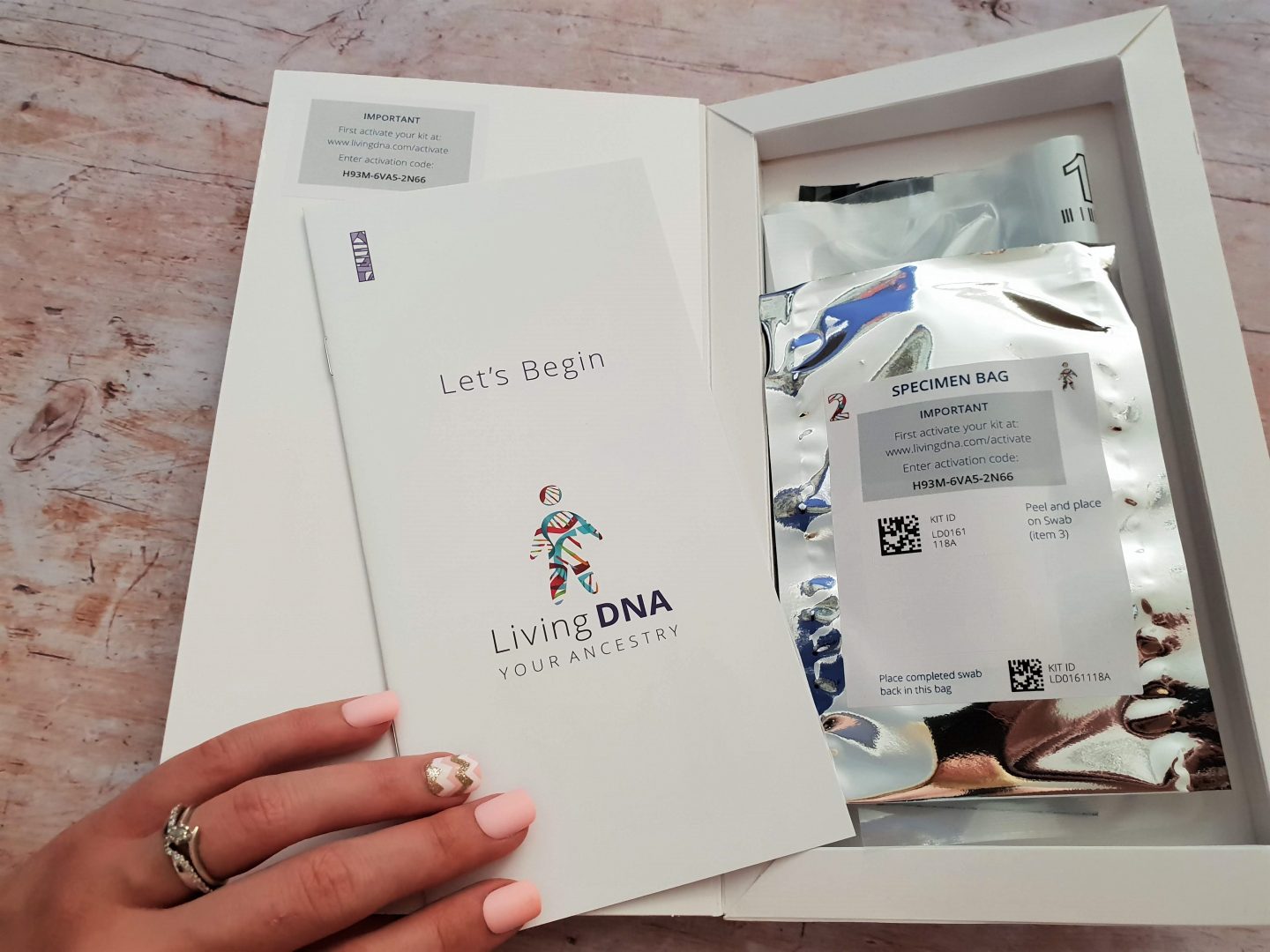
The box tells you your activation code, which you use for registering on Living DNA. This account is connected to the swab and you can track the progress of it online. Once it has been received, testing usually takes between 8 and 12 weeks.
I have wanted to take a genetic DNA test for years, so I was really excited! I regularly checked the website to see how things were progressing. Finally, one day I checked and it was ready!
What I found out from the DNA test
It confirmed my suspicions about my ancestry
Knowing through my research that all the ancestors had been from Europe and having such pale skin, I wasn’t overly surprised to find out that the ancestors in my motherline were 97.5% European (92.5% of which is Great British/Irish). The other 2.5% was South Asian (Pashtun). If I’m honest, I’d been hoping that I’d be a little less European and have more than two regions present. However, it was also really interesting to see that I am actually just as European as I thought!
It’s worth bearing in mind that as I am female, the test follows my motherline. This means it follows the mitochondrial DNA (mtDNA) passed down by mothers through the family (so my mum, my nan, my great-nan and so on). If I wanted to find out about my fatherline, I’d need to get my brother to do a test too. I wonder if my dad’s side is just as European or whether it’s more diverse!
Interestingly, it even whittles your DNA down into sub-regions. I’m mostly from South Central England at 44.4% and East Anglia at 34.%. However, I’m very pleased with my 3rd highest percentage, which is 5.9% Cornish! I adore Cornwall and have had many lovely holidays there. After 12 years away, we took Autumn on a camping holiday to Cornwall at the end of August. An ancestry avatar helps you to visualise what you’re made up of. All of this is based on the last 10 generations, by the way.
![]()
If charts are more your thing, this can also be displayed as a doughnut chart.
Migration
Something I found really interesting was finding out about the origin of my motherline and the migration journey of my ancient ancestors. It looks as though they started in East Africa before moving up to South Asia. They then spread across to the North of Spain and up to Finland.
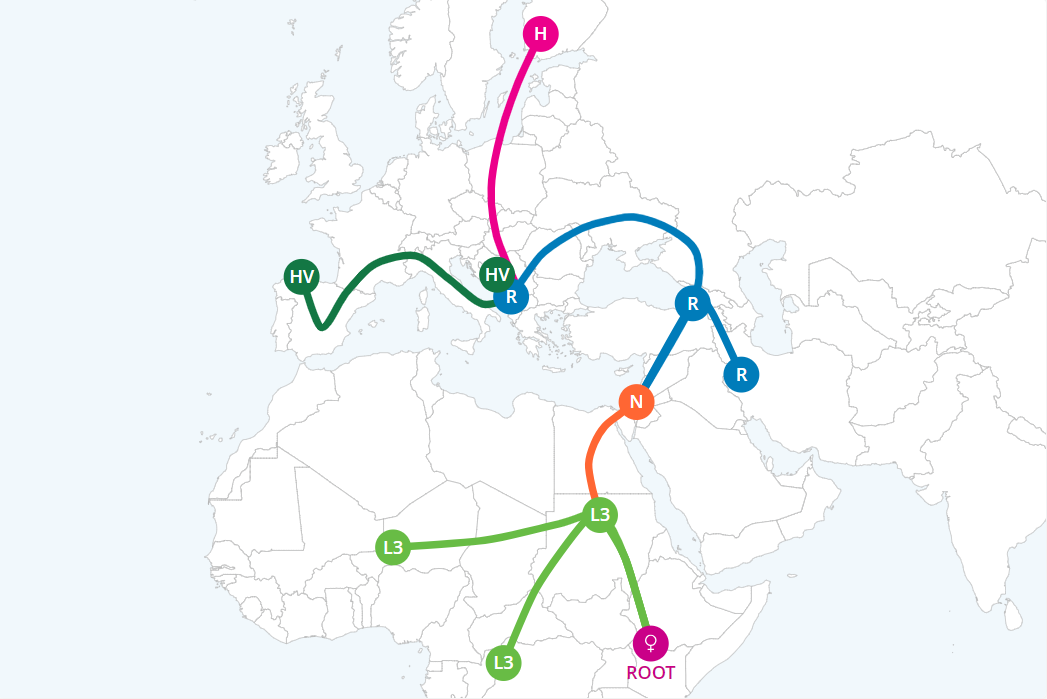
My haplogroup ‘is a collection of related family lines [I am] connected to through [my] mtDNA’. It’s fascinating to look where people who share the same haplogroup as me are most commonly found today:
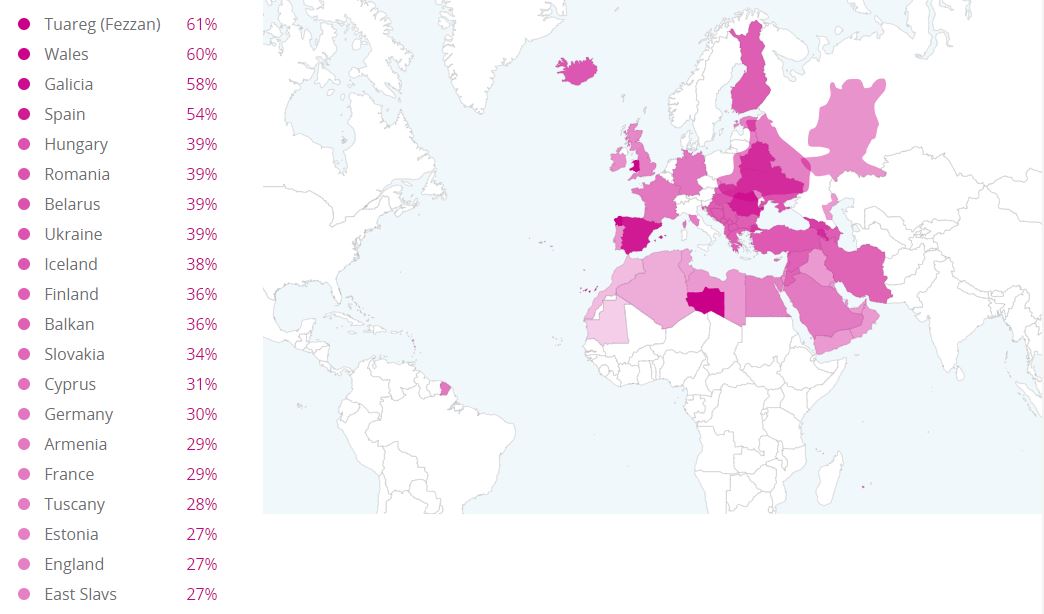
England only features at number 19 in the top 20 locations listed which wasn’t a result I was expecting!
Parting Thoughts
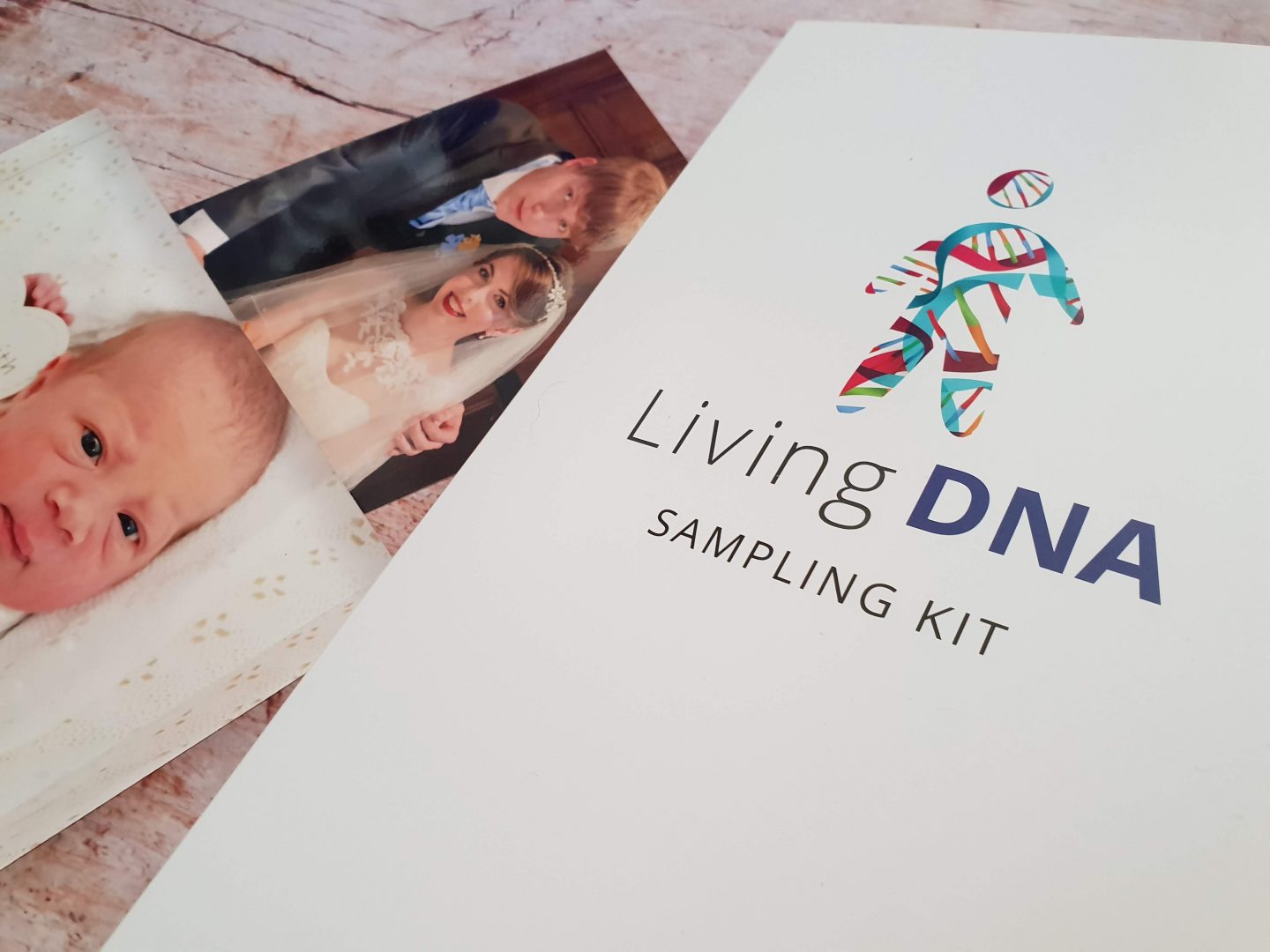
I’m so glad that I took this test, as it’s something I’ve wondered about and been interested in for years! My husband and I are near the beginning of our journey as a new family, but it’s good to see where I’ve come from. Living DNA offer a £39 coffee table book presenting your results, which I’d be interested in buying so that it’s easier to share the results with the rest of the family. Now I just need to get my brother to take a test so I can find out about the other part of the puzzle!
Disclosure: I signed up and took a test with Living DNA for the purpose of this review. As always, all views and opinions are honest and my own.
